Showing 97–108 of 247 results
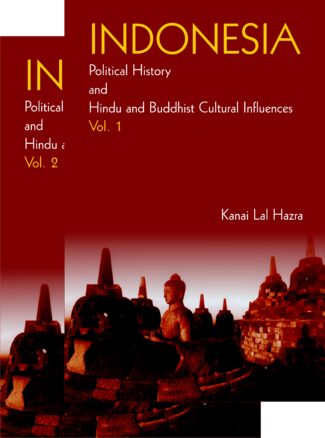
The two volumes present a comprehensive study of political, cultural and religious history of Indonesia. Of encyclopaedic significance, they take up a whole gamut of themes relating to history, politics, religion, literature, art and architecture, and sculpture of Indonesia. The volumes will immensely benefit scholars of political history, religion and culture specialising in South-east Asia and its links with other regions of Asia.
The two volumes present a comprehensive study of political, cultural and religious history of Indonesia. Of encyclopaedic significance, they take up a whole gamut of themes relating to history, politics, religion, literature, art and architecture, and sculpture of Indonesia. The first volume is on political history of Indonesia. It covers all dynasties/rulers of Indonesia from the earliest Sailendras of Srivijaya to the political scene in current times including the rise of President Sukarnoputri in the recent past. It covers a very wide range of aspects: struggles of dynasties, establishment of empires by the Sailendras, the Indo-Javanese empire of the kingdoms of Mataram, Kadiri, Singhasari and others, emergence of new cultures, decline and fall of the Hindu kingdom, colonial invasions and growth of nationalism. The second volume begins with the history of East Timor. It makes an in-depth survey of Hinduism, Buddhism and Islam in Indonesia, covering their establishment, contacts with other places owing to their religious links, modes of religious worship and rituals. The art, architecture and sculpture of the country symbolising Hindu, Buddhist and Islamic traditions are surveyed meticulously. A detailed account of Indonesia’s literature involves study of writers and their works, and languages and characteristics of the literature at various times. The volume discusses chronicles, historical writings, writings on medicine and on numerous miscellaneous topics, throwing light on their contents and styles of expression. The volumes will immensely benefit scholars of political history, religion and culture specialising in South-east Asia and its links with other regions of Asia.

The book studies the evolution of euhemeristic deities of the Vedic period mainly Indra, the Rbhus, the Asvins and the Maruts. It explores the rationale behind the euhemerism and the historicity of events leading to their mythologization.
In deities : whether in anthropomorphic or symbolic forms, the Vedic sages conceived a transcendent principle, which is far too subtle, far too abstract for the ordinary minds to grasp. And likewise, they concretized as divinities the various forces of nature recognizing the indispensability of rain and thunder, of the sun and fire for human survival. Alongside the material representations of the cosmic order or of nature and nature-related phenomena, mankind has also mythologized some of its exceptionally great personalities (like, for instance, the Buddha, Mahavira and Jesus), who were believed to incarnate superhuman qualities or the highest of human ideals though these deities of our times were veritably the magnified men of real history. Dr. Uma Chakravartys book investigates this phenomenon of euhemerism: the deification of historical personages, from among the divinities of Vedic writings. It is the first, all-exclusive study to look into the evolution of euhemeristic deities of the Vedic period and how these mortals-turned-gods came to have varying deific positions on the hierarchic scale of the Vedic pantheon. Meticulously describing Indra, the Ribhus, the Ashvins and the Maruts together with the connotations of their names and epithets the author not only explores the rationale behind the age-old euhemerism, but even the historicity of the events leading to their mythologization. Supported by extensive bibliographic references, the book is a brilliant effort to demonstrate the complementarity of history and mythology. And is, thus, invaluable to the scholars of Indology and its kindred disciplines.
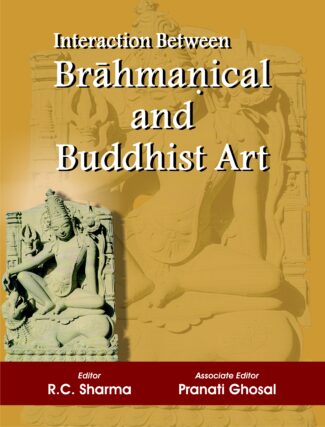
The present volume is an outcome of the expert discussion on the theories of Brahmanism and Buddhism, in an International meet at Jnana-Pravaha. Philosophical and artistic interaction between the two have been brilliantly discussed with references to famous places as well as texts to unravel basic principles.
Brahmanism and Buddhism adopted symbol and image worship almost simultaneously in the pre and early centuries of the Christian era. With the passage of time, the forms and plethora evolved and despite several distinctive features common elements between the two religions continue and fructified. The fact is revealed both at the philosophical and artistic levels. The present volume is the outcome of the well discussed theories by the experts, assembled in an International meet on the subject in the second week of February 2003 at Jnana-Pravaha, Varanasi, organized in the joint collaboration of Acharya Narendra Dev International Research Institute for Buddhist Studies, Lucknow. The book incorporates a good number of papers dealing with philosophical and artistic interaction between Brahmanism and Buddhism for more than a millennium years. The interaction was largely peaceful but there were certain phases in the Medieval period when clash also surfaced. It was most profound in the region of art and architecture, as a result of which some similarities as well as unique features between the two had emerged. All these aspects have been brilliantly discussed and specific references to famous places associated with Brahmanical and Buddhist arts in Asia as well as textual references to unravel basic iconographical principles have been adequately reflected in the present volume. The book besides being useful to scholars and students researching on ancient Indian art and architecture would appeal to general readers interested to know more about Indias glorious art traditions.
The book investigates the bhakti beliefs and practices of the subaltern Kabirpanth community in comparison with the nirguna bhakti thought of their guru, the medieval iconoclastic bhakti saint Kabir. By doing so, the book attempts to investigate the Kabirpanthis’ attempt at dissent and submissiveness vis-a-vis the dominant Sanskritic Hindu tradition. This dual strategy of dissent and submissiveness is analysed through subaltern postcolonial lens as well as by employing social anthropological empirical research.
The book begins by making an analytical study of the medieval Bhakti movement and the nirguṇa bhakti teachings and practices of Kabir. Using postcolonial discursive tools such as postcolonial mimicry, ambivalence and hybridity, the author investigates how the bhakti beliefs and practices of the subaltern Kabirpanth community are elements of subversive and resistance stance against the dominant Sanskritic Hindu tradition.
This book is a must read for anyone interested in bhakti religion and movement and those who wish to analyse subaltern religion through postcolonial lens.
The book investigates the bhakti beliefs and practices of the subaltern Kabirpanth community in comparison with the nirguna bhakti thought of their guru, the medieval iconoclastic bhakti saint Kabir. By doing so, the book attempts to investigate the Kabirpanthis’ attempt at dissent and submissiveness vis-a-vis the dominant Sanskritic Hindu tradition. This dual strategy of dissent and submissiveness is analysed through subaltern postcolonial lens as well as by employing social anthropological empirical research.
The book begins by making an analytical study of the medieval Bhakti movement and the nirguṇa bhakti teachings and practices of Kabir. Using postcolonial discursive tools such as postcolonial mimicry, ambivalence and hybridity, the author investigates how the bhakti beliefs and practices of the subaltern Kabirpanth community are elements of subversive and resistance stance against the dominant Sanskritic Hindu tradition.
This book is a must read for anyone interested in bhakti religion and movement and those who wish to analyse subaltern religion through postcolonial lens.
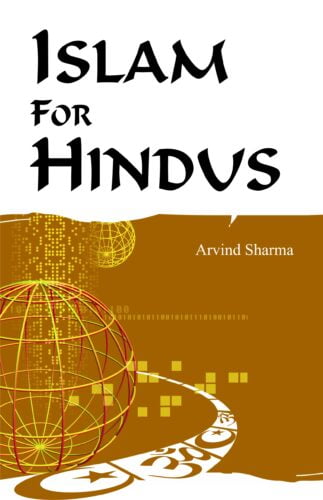
The book discusses the fundamental beliefs and practices of Islam with a view to enabling people of other religions to study the principles of Islam and to understand the similarities and differences between religions.
The book discusses the fundamental beliefs and practices of Islam with a view to enabling people of other religions to study the principles of Islam and to understand the similarities and differences between religions. In simple language, it deals with the concept of a prophet, the life of Prophet Muhammad, the contents of the holy text of the Muslims, the Qur’an, the Pillars of Islam, the history of Islam and practice of Islamic law. Along with the political, legal and social framework of Islam, it explores facets of Islamic mysticism Sufism by examining its major features like asceticism, love of God and knowledge of God. It finally looks into the basis for a dialogue between the Hindus and Muslims by delving into Quran’ic verses that stress plurality and the universality of diversity. The work will prove ample material for thought for the reader in general.
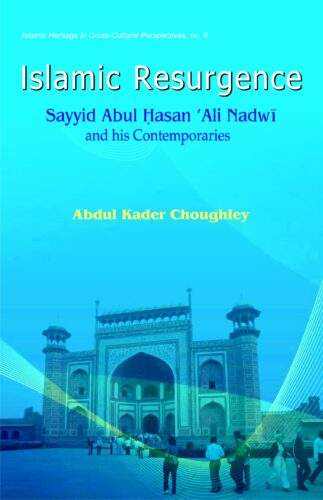
The books talks about the interaction between Islamic resurgent movements and their impact on the shaping of Islamic order, with the focus on Maulana Nadwi, the ulama, and Islamists and transmitters of tajdid (revival). Besides, it examines the contributions of Maulana Nadwi to Islamic resurgence, comparing his ideas with those of his contemporaries.
The topic of Islamic resurgence has gained significance in view of the geo-political developments over the last century in the Muslim world. The varied interpretations of tajdid (revival) by the ulama and the Islamists have deeply shaped the discourse of Islamic resurgence. This work studies the interaction between Islamic resurgent movements and their impact on the shaping of an Islamic order, with the focus on Maulana Nadwi (1913-1999), the ulama, and Islamists and transmitters of tajdid (revival).
The volume examines the contributions of Maulana Sayyid Abul Hasan Ali Nadwi to Islamic resurgence and his conception of an Islamic order, comparing his ideas with those of his contemporaries, Sayyid Abul Ala Maududi of Pakistan and Sayyid Qutb of Egypt. Beginning with a detailed historical analysis of Islamic resurgent movements, it deals with the sources of Islamic authenticity of an ideal past in relation to Islamic reformist thought. It takes up the historical figures and Islamic institutions that contributed to Maulana Nadwis formulation of Islamic resurgence. Common themes in the writings of Maulana Nadwi and his contemporaries are examined, especially the theories of Jahiliyyah and Hakimiyyah.
The book is relevant in the context of Islamic resurgence in the present day especially with reference to globalisation. It will be useful to students and scholars of Islamic studies as well as general readers.

The book surveys Islamic thought and movements in the Indian subcontinent with particular emphasis on the thoughts and activities of the leading twentieth-century thinkers, Mawlana Mawdudi and Mawlana Nadwi. It analyses the challenges they faced and their endeavours towards revival and reform of Islam.
The book surveys Islamic thought and movements in the subcontinent in the modern times, emphasising on the thoughts and activities of two leading Islamic thinkers of the twentieth century, Mawlana Mawdudi and Mawlana Nadwi. It discusses the sources of evolution of Islamic thought and the early reformative endeavours. It reveals that their responses to the modern challenges contributed to the revitalisation of Islamic thought in their own perspectives. In the context of revival and reform of Islam, they found their interpretation of Islam as essential for an appreciation of the religion’s dynamism and diversity. The book discusses their holistic approach towards Islam as a comprehensive guide for private as well as public life. It explains how they viewed the plight of the Muslim community as something that had to be addressed by sharpening the Muslims consciousness of the dynamic characteristics of their faith and its ability to halt the temporary state of decline. For the purpose, Mawdudi focused on the systematic presentation of Islam. It examines his formation of Jamaat-I-Islami and its role in rebuilding the Islamic State of Pakistan. It explains Mawlana Nadwi’s tradition and Sufistic approach to religion, showcasing his views and response relating to the Muslim Personal Law Board, Babri Masjid demolition, the Palestine issue and the West. The book will interest Islamic scholars and all those interested in evolution of Islamic philosophy in modern times.
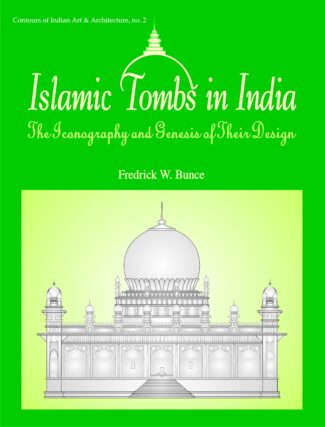
The book studies the architecture and iconography of some 36 Islamic tombs belonging to the period ad 1230 to 1754. Abounding in line drawings, it makes examines the monuments size, plan and elevation, the techniques of their construction, masonry and artisanship, and the relevance of each monument in the overall scheme of Indo-Islamic architectural development.
The work by an Indological scholar who has studied different architectural traditions of the world covers the architecture and iconography of some 36 Islamic tombs in India spanning a period of over 500 years from c. ad 1230 to 1754. It begins with a brief historical background to the Islamic rule in northern India and a discussion on burial practices and tomb types of the time to further understanding of the underlying concept of construction and functions of the tombs. Abounding in numerous line drawings of plans and elevations, and figures, it examines the influence of different traditions Buddhist and Hindu as well as other Asian and African and Mediterranean traditions on evolution of the form of Islamic tombs. It makes a detailed examination of the Indo-Islamic tombs under consideration: their description, size, plan and elevation including the interior space and application of the mandala patterns over the tomb structures, the techniques of construction, masonry and artisanship employed in them. It explains the place and relevance of each monument in the overall scheme of Indo-Islamic architectural development and growth as well as the importance of each by itself. It delves into the religious, philosophical and mathematical bases of the architecture and its application to tomb-building. The research also involves a comparative study of Indo-Islamic tombs vis-a-vis other architectural marvels of the world Islamic and non-Islamic. The book will be extremely relevant to scholars and students of Indian, particularly Indo-Islamic, iconography and those interested in Indo-Islamic cultural traditions in general.
“Jain narrative as well as canonical literature indicates that the first tirthankara of Jains, Lord Adinath, was the founder of work and knowledge-based culture in India. He taught people how to live as communities and adhere to certain prearranged rules of coexistence and cooperation. He prescribed six different skills to be acquired by his subjects for worldly activities like (i) Asi (swordsmanship for protection), (ii) Masi (writing skills), (iii) Krishi (agriculture), (iv) Vidya (knowledge), (v) Vanijya (trade and commerce) and (vi) Shilp (crafts). These skills not only help in creating worldly wealth but also assist individuals and communities to live happily with overall prosperity. Following the path shown by Lord Adinath and subsequent tirthankaras. The Jain society from ancient times has been engaged in business activities with ahimsa (non-violence) as their guiding principle. Owing to this principle of ahimsa, we do find trends of the Jain community being engaged in commerce and trade. The historical trajectory of mercantile characteristics among the Jains continued till date and since India’s Independence, many renowned Jains have contributed to the development of India. This book documents the conceptual foundation of Jain tenets with reference to the Western approach toward business ethics; it also covers biographies of successful Jain entrepreneurs in the past and present. Apart from the details on the conceptual framework of Jain Business Ethics and Jain Business Engagements through the ages, it also contains various essays on Jain Values and Entrepreneurship. This book is an academic attempt to examine the Jain religion as an Eastern case study, which will be of interest to readers, who are looking for an alternative perspective in light of contemporary worries about global business and economic systems.”
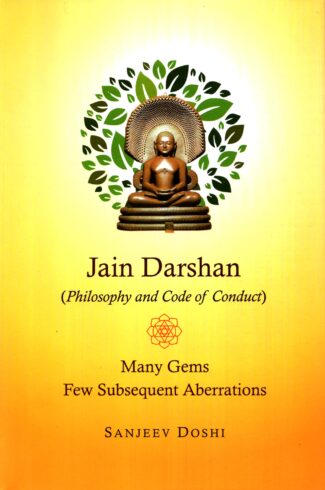
The title will seem misleading to many, as it will conjure up in their mind, an idea that the book is about important Jain temples and events and will take you on a pictorial tour of the same. In fact, many well-wishers had advised me to change the title.
Darshan is a name given to all Indian religious philosophies, be it Hindu, Jain or Bauddha.
Western philosophies are not called Darshans. Why is it so, is explained in the Introductory chapter. And when you read it, you will feel proud of our Indian culture and the strides we have taken in the spiritual field.
The title will seem misleading to many, as it will conjure up in their mind, an idea that the book is about important Jain temples and events and will take you on a pictorial tour of the same. In fact, many well-wishers had advised me to change the title.
Darshan is a name given to all Indian religious philosophies, be it Hindu, Jain or Bauddha.
Western philosophies are not called Darshans. Why is it so, is explained in the Introductory chapter. And when you read it, you will feel proud of our Indian culture and the strides we have taken in the spiritual field.

The title will seem misleading to many, as it will conjure up in their mind, an idea that the book is about important Jain temples and events and will take you on a pictorial tour of the same. In fact, many well-wishers had advised me to change the title.
Darshan is a name given to all Indian religious philosophies, be it Hindu, Jain or Bauddha.
Western philosophies are not called Darshans. Why is it so, is explained in the Introductory chapter. And when you read it, you will feel proud of our Indian culture and the strides we have taken in the spiritual field.
The title will seem misleading to many, as it will conjure up in their mind, an idea that the book is about important Jain temples and events and will take you on a pictorial tour of the same. In fact, many well-wishers had advised me to change the title.
Darshan is a name given to all Indian religious philosophies, be it Hindu, Jain or Bauddha.
Western philosophies are not called Darshans. Why is it so, is explained in the Introductory chapter. And when you read it, you will feel proud of our Indian culture and the strides we have taken in the spiritual field.
| There are no products |